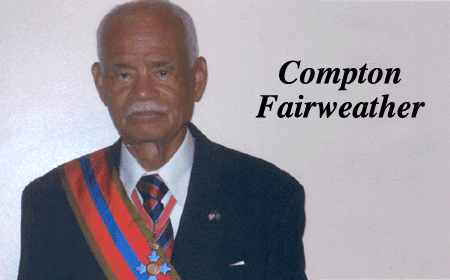According to legend (no proof available) the name Belize is a corruption of the name of one Peter Wallace, a buccaneer who sometime in the 1600’s was driven from the island of Tortuga by the Spaniards. He then sailed west, arriving at the mouth of what is now the mouth of the Haulover Creek (not the mouth of the Belize River), where he set up a camp.It is alleged that the Spaniards called the “river” Valis or Balis; this legend is attributed to the Dominican priest Fray Jose Delgado.
There is also the suggestion that Belize is derived from the French word “Balise” or “beacon.” E.O. Winzerling, in his book “The Beginning of British Honduras 1506-1765,” suggested that French corsairs were in the area before 1600 and others have suggested that they used to mark channels through the mangrove with “beacons”.
The most plausible, or reasonable hypothesis is that Belize is of Maya origin. At least most scholars are of that view, and my most believable is that of Dr. Eric Thompson, the world-renowned anthropologist, ethnologist, ethnographer and hieroglyphics expert.
The Mayas were in this part of the world around 2000BC. We know that there was a town in the Cayo district call TIPU with a population of four to five hundred inhabitants. TIPU was situated on the river which was also called TIPU. The two Maya words that are the possible origin of Belize, are “Belix” which means “muddy water,” and “Belkin,” which means “route to the sea”. There would be no muddy water in rapid running TIPU River, so I would choose Belkin for the river going east to the sea.
A side note on the Belize River. In the early 1950’s I was part of a team which did a geological survey of Belize from the Sarstoon to the Hondo and everywhere in between (especially river and creeks) and at the end of our work our chief petroleum geologist, Italian Dr. Giovani Flores, was able to prove that the mouth of the Belize River many centuries ago was at what is now the English Caye channel. Today, thanks to Google earth, this ancient Belize River bed can be seen leading from the Haulover Bridge to the English Caye channel.Also, our famous Blue Hole was once a land cave; stalactites and stalagmites cannot form under water.
In Belize there are the Yucatec Maya, mainly in Corozal and Orange Walk, the Kekchi in Toledo and the Mopan in the west in Cayo. During our geological exploration in Corozal and Orange Walk we would be able to work out of hotels in the towns; whereas in Toledo, the “forgotten district,” (and still is to a certain extent), we had to live in the jungle among the Kekchi. We loaded a brand new Land Rover on the bow of the Heron H, and in a couple of days we off-loaded it in the town of Punta Gorda, and drove it as far as we could towards Gracias a Dios Falls. We then walked; according to our pedometer we averaged about 20 miles per day all over Toledo. At night we would sleep in U.S Army surplus hammocks with rubber roofs for protection against rain with zip-around netting as protection against mosquitoes and other pests. Living like that allowed me to learn a few words in Kekchi and to appreciate their food. In memory of two of my advisors, Samuel Haynes – the author of our national anthem, and the composer of its music, Dr. Selwyn Walford Young, I would like to say part of our “wealth untold” are the magnificent temples left us by our Maya ancestors that will earn our country tourist dollars in perpetuity.
In the early 1970’s there was a “crisis” in Belize on the “Maya” issue and I had to call Dr. Thompson at his home in Essex, England for clarification. He told me he was working on his book THE MAYA OF BELIZE – HISTORICAL CHAPTERS SINCE COLUMBUS and he had sent Premier George Price a draft and he hoped Mr. Price was not using it for political purposes. I don’t believe Dr. Thompson was able to finish his book before his death.The book was published by Cubola in 1988 with only about 48 pages with information added locally. The “crisis” I refer to concerns the Maya hieroglyphic façade on all four sides of the upper floor of the Royal Bank of Canada (now Belize Bank Market Square) and the attached map of Maya Belize which was leaked to us in the Freedom Committee.
Before his death on the 9th September 1975, Sir Eric Thompson was knighted by Queen Elizabeth II. Guatemala, after first refusing because of the dispute over Belize, later awarded him the Order of the Quetzal.He had already received top honors from Mexico and Spain.


